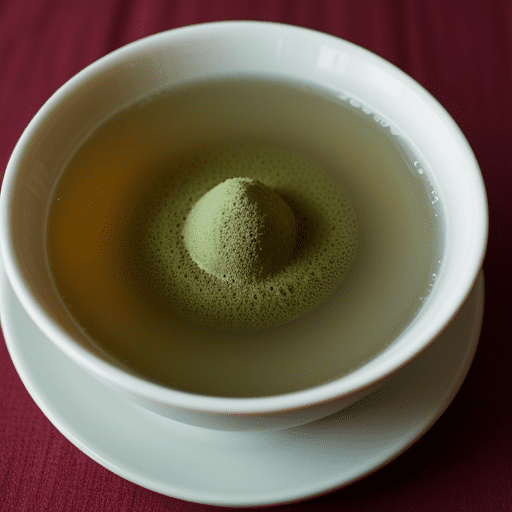The Versatile Green Olive: A Culinary Treasure and Health Powerhouse
The green olive is a nutritional power-house which unfortunately has been outshined by its far more famous and delicious cousin, the black olive. Brought to tables across ancient civilizations and kept up with modern ones, this small unassuming fruit has come a long way over the centuries. But the green olive is a malleable ingredient that goes far beyond just its full, bold taste and meaty texture; in fact you can use this versatile gem of an ingredient to make more dishes than I know how it cooks food! From a basic snack to an intricate recipe, it is applicable at almost all levels. Green olives are also a source of nutrients like heart-healthy monounsaturated fats, vitamins and antioxidants which makes it not only an amazing contribution to meals but as well to health. This time, we will be exploring one common treat: green olives and their different use in several dishes as well the major benefits of health it brings itself together — revealing why this modest fruit is indeed a precious gem when it comes to cooking.
Nutritional Benefits of Green Olives
While green olives have long been praised for (or even criticized as) their strong and tangy taste, they are also a powerhouse of nutrition. They are low in calories which makes them an ideal fruit for people on a weight loss regime to snack upon. High in monounsaturated fats, and especially oleic acid, green olives are excellent for reducing heart disease risk by lowering cholesterol levels as well as inflammation. They are full of antioxidants, like vitamin E that helps to fight oxidative stress and support overall cellular health.
In addition to their heart-healthy benefits, green olives are rich in minerals like iron which is necessary for oxygen transport by hemoglobin in the blood and calcium which is essential for building strong bones. Olives contain fiber that is beneficial for healthy digestion, and a range of phytonutrients associated with anti-inflammatory compounds as well as cancer-fighting effects. This, in turn, can promote improved cardiovascular health and metabolic functions leading to a significant enhanced well-being if you include green olives as part of your daily diet.
Rich in Healthy Fats
Elaborating on that, green olives have lots of monounsaturated fats — specifically oleic acid (to be exact, approximately 75% of their overall fat content comprises this particular type). Oleic acid: Oleic Acid is well-known for having an assortment of health benefits particularly in keeping cardiovascular function right asides reducing inflammation and LDL cholesterol, without touching the good kind (HDL). This characteristic property, makes green olives a perfect aiding side to the heart-healthy diet.
Moreover, the healthy fats in green olives increase the intestinal absorption of fat-soluble vitamins including A-D-E-K and hence making them become more nutritionally beneficial. The presence of the monounsaturated fats also helps in increasing satiety and thereby controlling hunger which is associated with weight gain. Their features are that they can enhance your mental capabilities, decrease the risk of deadly disease such as Alzheimer and stroke.
A tasty way to include this diet fat also green olives, in daily meals as a snack or even with salads and Mediterranean dishes.
High in Antioxidants
Not only are green olives exciting due to their delicious taste and ability of being used in a large number of dishes; they also have very beneficial properties, notably antioxidants. Free radicals cause oxidative stress which damages cells in the body and contributes to heart disease, cancer or other chronic conditions; antioxidants neutralize free radical harm. Not only are green olives packed with antioxidants but also powerful ones likevitamin E, oleuropein, hydroxytyrosol and tyros. They exert the greatest benefits on cellular protection, anti-inflammatory action and immune support when working in tandem. Green olives are also a common source of antioxidants that can protect the health of our brain, helping prevent neurodegenerative diseases. Adding green olives to your diet can help the immune system function at full strength, fighting off illnesses and giving a punch of flavor and texture in meals. This in totality makes green olives to be not only a gastronomic absorb but also an authority for proper health.
Excellent Source of Vitamins and Minerals
Green olives are a rich source of various vitamins and minerals that can benefit your overall health. These small but mighty fruits are extremely high in vitamin E, which helps to neutralize free radicals and prevent them from oxidizing your cells (oxidation is what causes chronic diseases as well as aging), leading to glowing skin. In addition to elevating their nutritional footprint, green olives are also a source of vitamin A which that plays roles in vision health, immune function and skin integrity as well.
For minerals, olives are a good source of iron which is important for the production and transportation (carrying) of red blood cells throughout your body to prevent fatigue as well as enhancing energy levels. Calcium – essential for bone health and muscle function; Magnesium– helps your body regulate nerve balance, blood sugar levels, and maintains normal blood pressure. The potassium of green olives is necessary for heart health, play artery Sodium balance and help muscles to contract satisfactory. When you eat green olives, they provide all the essential nutrients that your body requires and in fact contributes a truly versatile food whose consumption enhances health.
Beneficial for Heart Health
Being high in monounsaturated fats, green olives (especially oleic acid content) are helpful for heart health as these fatty acids reduce bad cholesterol (LDL), at the same time retain or increase good cholesterol levels. This particular fatty acid combination promotes the ideal blood lipid profile, as well as cardiovascular health in general (because it decreases inflammation), which is associated with a reduced risk of heart disease. Green olives are, likewise, a great source of antioxidants like vitamin E and polyphenols which fight oxidative stress — one more cause leading to heart disease. Plus prevents the LDL cholesterol oxidizing which leads to artery plaque. They are a great source of fiber, which contributes to normal blood pressure and lowers cholesterol. Also known as the “other heart-healthy substance” of green olives, potassium is crucial for balancing sodium in our bodies which compliments its customary source to help reduce high blood pressure. Since you can always eat green olives anyway, it is indeed a delicious option to consume for the health of your heart.
Culinary Uses of Green Olives
Green olives are full of quality which might make them a good ingredient in different cuisines around the world. They are a perfect pairing for Mediterranean cuisine like Greek salads and Spanish tapas. So, when marinated with herbs and garlic citrus flavors is a delicious zesty appetizer. Green olivesBuffalo’s green sliced are just right for a pizza built around rich cheeses and meats. They can be used mixed into tapenades for more of a crunchy and will stand up to the ground olives etc. that they are blended with when making bread spreads or dips. They add a hit of briny flavor, too — you need them in some things (chicken with olives and preserved lemon), they are essential no matter how sparingly deployed. In Italian cooking, they make pasta taste better and can be used to stuff poultry or fish. In addition to cooking, we can also add chopped green olives in bread dough or scones for the same surprising component. This is what makes them a coveted ingredient in almost every kitchen of any food culture.
As a Snack
Green olives are easy to snack on and provide a happy blend of both taste and vitality. Their brackish essence and lightly acid flavor are a welcome substitution for more pedestrian snacks. Green olives are an excellent source of healthy monounsaturated fats, fiber and antioxidants — which supply sustained energy to your cells; increase good cholesterol levels while reducing inflammation throughout the circulatory system. They are high in Vitamin E, which aids skin and immune function
Green olives are not only good for you, but they taste great as a snack. Eat them straight from the jar, alongside cheese and nuts on a charcuterie board for some salty sweetness in every bite or toss into salads for healthy crunch. Natural Appetite Suppressant — Even green olives are naturals at curb cravings, which means that they can be a great snack to have between meals without snacking on things not heathy instead. The fact that they are portable makes them perfect for “on the go,” meaning a healthy snack is always at hand.
In Salads
Green olives, which have a tart and tasty salty tang flavor made salads more exceptional in taste. Their meatiness contrasts well with the crunch of greens and tomatoes, leaving a pleasing texture in every bite. In Mediterranean dishes, one of the spices that accompanies green olives is feta cheese and together with red onions or bell pepper give rise to an appetizing bright salad. Plus, they are full of good fats like vitamin E and antioxidants that help keep your heart healthy as well reduce inflammation. Green olives, whether whole or sliced or pitted dried figs (these are the best if you can find them), for a sweet-salty counterpoint that adds complexity and depth to each aromatic bite. They also play nice with practically any dressing you care to toss them in, from zingy vinaigrettes to creamy tahini, making sure that every bite is as flavourful and good for your body-making experience. By adding green olives in salads not only leaves good taste but with nutritional value it also adds a lot.
As an Ingredient in Tapenades
Green olives have a more definitive taste with firmer flesh and are one of the indispensable component in tapenades, a traditional Mediterranean spread that proves how versatile green olive could be. Green olive tapenade is a classic Provencal dish, as its another one of those youllseeitinyourdreamsdishes that the region gave to us..RemoveAtapaaden- what? Where did it come from?
Green olives bring a bright, tangy flavor to counter the briny capers and savory anchovies for a pungent yet balanced paste. You can mix this up by adding some sun-dried tomatoes other fresh herbs — the possibilities are truly endless to adapt it for different palettes and dishes.
In the kitchen green olive tapenades are as versatile. Add them to toast and crostini, mix with pasta sauce that needs a flavor boost, add into marinades for both meats and vegetables or serve along side cheese boards. This is not only a great example of just how versatile the green olive can be when it comes to culinary applications but also provides us with an insight into why this variety might, in fact, significantly contribute towards your health by providing good amounts monounsaturated fats and vitamins (notably vitamin E) along with antioxidants that form part of a heart-healthy diet.
In Mediterranean Dishes
In Mediterranean cuisine, where one often finds the recipe of green olives is used, their flavor enriches and complements but above all it preserves those beneficial properties that make this food unique from a nutritional point of view. These tangy little suckers help raise the stakes on dishes as iconic as Greek salads and tapenades by adding a depth of flavor that can be leveraged in many different ways. Feta cheese, cucumbers and tomatoes taste delicious with the addition of salty kalamata olives to any Greek salad there is. Other spreads, like the paste of olives (tapenade), capers and anchovies that can be spread on bread or small amounts served with crusty bread for example — its a great starter to your barbecued fish. Spanish tapas — small plates meant to be enjoyed with wine or whiskey, because why the hell not?! — are often topped with green olives filled pimento, anchovies and almonds. A delightful explosion of flavor in every bite! 🍹🙌 #CheersFreaks Aside from their deliciousness, green olives are high in monounsaturated fats (MUFAs), antioxidants and anti-inflammatory substances so its a go-to food if your eating Mediterranean!
Varieties and Types of Green Olives
Green olives are available in many different varieties with unique flavors, textures and culinary applications. Among the most popular varieties are Spanish Manzanilla, which is somewhat nutty and rather firm (ideal for eating out of hand or stuffing) From Greece, Halkidiki olives are a favourite with their large and succulent meaty texture prized for its fleshy sweet taste which is perfect in salads or served as canapes.
One of the most stand out is an Italy Castelvetrano which are known for being sweet and mild, adjunct with a brilliant green color that makes then absolute perfect choice on antipasto platters. A small, tightly textured olive from France enjoyed in cocktails or medley of olives because they have a distinct tart piquant flavor –good for tapenades too.
Every one of them has its own culinary applications, for spicing up pasta and pizza or giving cheese boards a stylish finish. These varieties of green olives contribute much more than just flavor to any meal, making them the most versatile and beloved type used in kitchens throughout the globe.
Manzanilla
Manzanillas, undoubtedly the most popular green olive variety, stand out in their culinary applications and health benefits. These small, firm olives, originating in Spain and notably common in Andalusia, are cherished for their smooth, distinctly nutty brininess, and low acidity. Hence, they are often consumed out of hand or incorporated into numerous recipes. Furthermore, Manzanillas are frequently stuffed with pimiento, cheese, or almonds, broadening their culinary appeal. Moreover, the olive variety is a veritable goldmine of health benefits. For example, abundant monounsaturated fats help lower one’s bad cholesterol levels and support heart health. Second, a hearty dose of dietary fiber contributes to excellent digestion. In addition, Manzanilla olives feature a vast amount of antioxidants, including vitamin E, to shield you from oxidative stress. Finally, this olive type is a splendid source of iron and copper, two vital minerals for overall wellness. Thus, whether for pure pleasure or an exquisite relish, Manzanilla olives are truly a must-try pleasure.
Picholine
This means that Picholine olives gourmet flavor—the olive variety from the Gard region in southern France—and many others owe much to its versatility and tradition of green olives. With a strong and salty finish, this olive is immediately distinguishing with its long shape, crunchy nature, and earthy taste. Considered one of the most versatile in gastronomy, Picholine olives can be eaten as table olives; they are delicious for salads and a classic garnish.
Picholine olives have much more to offer than just their culinary use. Mono and polyunsaturated fats — good in supporting cardiovascular health, antioxidant rich in Vitamin E & Polyphenols that help fight our own oxidation around the body. Olive olives also contain important minerals to maintain calcium and iron health, which will help with energy metabolism. Picholine olives are a cherished fruit that can be safely integrated into an overall balanced diet, as they offer flavor but also support health at the same time; this is why these olives have become prominent ingredients in both traditional and modern cuisines.
Castelvetrano
These are known for their mild, buttery taste and vibrant green color these big olives initially from the town of Castelvetrano in Sicily. Unlike stronger varieties of olives like Kalamata, Castelvetrano is more sweet and mild tasting with a firm bite to them that allows for its incorporation in various culinary applications. For me, they are mostly thought of as snack olives—raw or barely seasoned with chili and herb pastes—and all types seem to pair easily in salads, antipasti platters, stews sauces (and tapenades).
Castelvetrano olives have become popular due to their delicious flavor, but they also boast incredible health properties; Loaded with monounsaturated fats, they provide heart protective benefits by lowering the bad cholesterol levels. They are also rich in antioxidants, Vitamin a and E as well phytonutrients which contribute to immune function and reduction of oxidative stress. It is unique blend of beauty and healthy properties fundamentally entrenches Castelvetrano olives as an ancillary ingredient for both gourmet dishes, in addition to common every day preparation.
Gordal
Gordal Imaginably the queen of olives for its large size and great taste. Gordal: Hailing from Spain —specifically the Andalusian region— Gordal takes its name for gordo, Spanish for fat and describes perfectly how plump and meaty it really is. Ben Clifton / CC BY-SA These olives are valuable for the same reasons as green ones: culinary factor and health benefits. In the kitchen, Gordal olives are used to stuff all sorts of spectacular things such as pimento (of course), garlic and anchovy so they make a fantastic teaser before dinner. They are also great for salads, tapas or pizza topping thanks to their firm texture.
In terms of health, the perfection of their balance also stands out in its monounsaturated fats nutrition. They are likewise abundant in antioxidants and anti-inflammatory representatives, producing a good deal for health. Besides, they offer essential nutrients — including vitamin E, iron and dietary fiber. So, the Gordal Olive is a very versatile ingredient in the kitchen and also has potential health benefits due to its textural qualities.
Storing and Preserving Green Olives
Proper storage and preservation of green olives are necessary to sustain the rick zest, firm texture, and healthful properties. First up, green olives are usually cured in a brine – that would be plain old saltwater (sometimes with added vinegar). These are marinated in oil and vinegar which not just ting to the flavors but also acts as a preservative. At home olives should be stored in a cool, dark place preferably glass containers to prevent any chemical reactions with metal or plastic container. Keep in refrigeration to stay fresh for long time. After opening, the olives must always be kept in brine with an airtight seal to prevent oxidation and spoilage. In addition, you can opt to vacuum seal and refrigerate for a much longer shelf life. Storing this same way not only increases the shelf life of green olives but also maintains its delicious taste & nutritional value, which can be used in various ways for culinary and health benefits.
Methods for Curing
Converting these nutrition-rich bitter fruits into a morsel of culinary delight — oh, how this is the RAISON D’ÊTRE for curing green olives. There are about 4 traditional methods of curing olives and few many commercial too; these generally fall into one or more methods like Dry-Salt Curing, Brine-Curing, Lye-curing & Water Curing. Dry-salt curing means packing olives in salt, which de-bitters them and eliminates moisture for shriveled many flavored olives. One of the most popular methods is brine curing, a process that involves placing olives in salted water and letting them ferment over many months to develop its beautiful taste. While not exactly traditional, lye curing employs a very caustic solution that will dissolve the bitter compounds faster than fermentation alone with multiple washings and often ending in brining for flavor as well. Water Curing: This method is simply soaking olives in fresh water then changing out the oiled water and replace…45 min. Do not forget that every method improves the flavor and texture of your olives, while also keeping all important nutrients intact during their use in cooking.
Proper Storage Techniques
The way that green olives are stored is important to keep them tasting as fresh and crispas possible, while preserving all the nutrtients. Green olives, on the other hand, should be transferred from their original packaging to a resealable plastic container — or any jar that seals tightly and fits all your green (or fermented) little buddies inside it along with liquid brine comparable in salt content as mentioned you may make at home. The brine is a natural preservative which gives the olives an intense flavour and firm texture. Do not leave the jar sitting out at room temperature for an extended period of time; Put your container into a refrigerator under 40°F (4°C) which prevents any bacteria to mold being grown.
Make sure that you use clean utensils when dealing with olives, as they can cause cross-contamination. Without brine, a saltwater solution of 2 tablespoons per cup of water can act as an effective preservative. When stored correctly, green olives can actually last for several months without spoilingMaking excessive quantities will also eliminate prolonged use as they are served with various dishes full of flavor. If you open the container and notice a strange smell or see it cloudy in brine, then discard them.
Shelf Life and Expiration
Green olives have a long shelf life and are not easily perishable, which makes it perfect for your pantry! The brine or vinegar that green olives are packed in give great preservative qualities and unopened jars/cans can remain good for 2 to 3 years at room tempemperature ideaslly stored ot of light. After opening, the olives should be kept under refrigeration and they will keep their flavor up to two weeks. In order to get the maximum shelf life out of it, they should be stored fully submerged in their brine and used with clean utensils (even better has washed hands). However, if the olives become foul smelling or tasting and/or moldy it is best to discard. On top of that, the green olives can be stored for a lifetime so this way they matched both words “green” and sustainable. Their long shelf life means you can reap their nutritional benefits and bright foliage even when out of season, cutting down on waste while offering more flexibility to your meal planning.
Tips for Extending Freshness
Proper storing of versatile green olives are also necessary in order to keep their freshness for a longer time. Olives also need to stay in their brine or a similar solution, as the salty liquid keeps them from going bad and maintains flavor and texture. If they come without brine, you could soak them in a salted solution (1-2 tablespoons of salt to 1 cup/200ml water) and keep the olives under this salty blanket. To keep olives fresher, longer store them in an airtight container (glass is best) which will help reduce exposure to air and moisture that can lead to spoilage.
Olive storage: Refrigeration is the key; mild temperature and consistent cold slows down bacteria, mold growth. Jars that are unopened will last longer and can be stored in a pantry away from direct sunlight. Chutneys will develop in flavor over time, so once opened, use clean utensils to avoid contamination and consume within two -three weeks. Following below simple and effective tips would retain the unique taste of green olives, which in-turn is a pleasure for your recipe.
So what have we concluded?
So in conclusion, the green olive is not only a versatile food ingredient but also a health powerhouse. With so many culinary uses, it goes far beyond salad and tapenade toppings; using to add a flavor boost your Mediterranean dishes or cocktails is an easy choice. While the green olive is known for its depth of vibrant, zesty flavor, it also offers a wealth of health benefits. It is a rich source of antioxidants, important vitamins and heart-friendly monounsaturated fats which helps in maintaining good cardiovascular health along with fighting inflammation leading to better general well-being. It is due to its one-of-a-kind compound Oleuropein that makes it even more anti-inflammatory and antimicrobial helping purify your body. Thus, adding green olives to the diet is a fun way of enjoying its flavors and multiple health beneficial effects. Indeed, the green olive is much more than an edible object — it’s a culinary gem and health food to boot.





